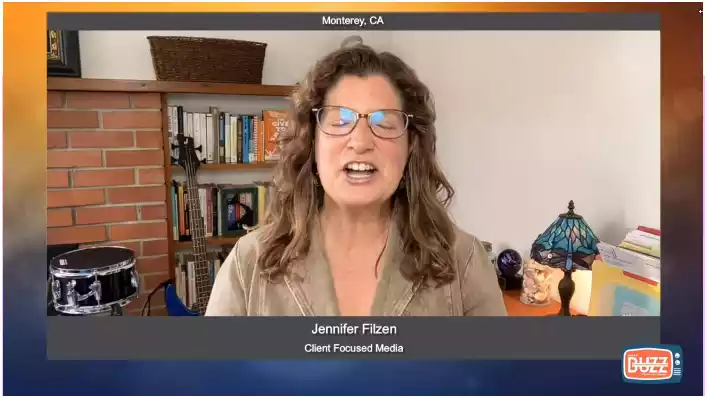Transforming Prior Authorization: Innovations to Enhance Patient Access Services
Ready to see how healthcare is evolving? Dive into the future with transforming prior authorization and discover how innovations are making patient access smoother and more efficient. Don't miss out!

When navigating healthcare services, you might wonder, what does getting prior authorization mean? Getting prior authorization means that your healthcare provider must obtain approval from your insurance company before performing certain treatments or prescribing specific medications. This step ensures that the proposed care is medically necessary and covered under your insurance plan. Without this approval, you might be responsible for the costs out of pocket.
Ready to make the next move? Start now!
Table of Contents
Transforming Prior Authorization to Enhance Healthcare Outcomes
Introduction
The practice of authorization (PA) has been a fixture in healthcare as a tool to manage costs and ensure appropriate patient treatment. While vital, these processes can sometimes create obstacles that delay care and impact satisfaction. With the evolving landscape of healthcare, it is crucial for systems and procedures governing access to adapt accordingly. This article delves into strategies to reshape prior authorization practices to improve patient access services.
Understanding Prior Authorization
Prior authorization entails insurance providers requiring healthcare professionals to secure approval before delivering medications, treatments, or services. While intended to guarantee patients receive cost-effective care, this protocol often results in delays that can adversely affect outcomes.
Challenges in Current Prior Authorization Processes
The existing processes of authorization encounter obstacles that impede efficient patient access:
- Approval Delays: The time taken for approval can lead to treatment postponements.
- Administrative Strain: Healthcare providers frequently dedicate time to navigating the PA procedure and concentrating on patient well-being.
- Lack of Clarity: Providers and patients may need help determining which service has the appropriate authorization and need clarification and satisfaction.
Innovative Approaches to Prior Authorization
1. Digital Platforms for Efficient Prior Authorization
A progression in authorization involves the introduction of digital platforms designed to streamline submission and approval procedures. These platforms enable healthcare providers to complete authorization requests, reducing paperwork and minimizing errors. Features like eligibility verification and automated status updates enhance communication between providers and insurers.
2. Enhanced Tools for Collaboration
Innovative collaboration tools foster communication among healthcare providers, insurers, and patients. Secure messaging systems facilitate real-time discussions, helping to clarify requirements and approval processes. With robust collaborative networks established, stakeholders can address issues promptly, ultimately enhancing access to essential services.
3. Standardized Criteria and Processes
Establishing authorization criteria helps reduce variations in approvals and expectations. By following agreed-upon guidelines and protocols, providers gain insight into the requirements for submitting authorization requests. Standardization also enables insurers to make decisions based on predetermined criteria, leading to expedited treatment approval processes.
4. Educational Initiatives and Training Programs

5. Integrated Health Records
Bringing together health records from platforms can significantly improve the authorization process. By ensuring that patient data is easily accessible to all parties, such as insurers and healthcare teams, the need for paperwork is minimized. Enhanced access to health information enables decision-making and specialized approval processes.
6. Use of Patient Advocates
Engaging patient advocates can assist patients in navigating the authorization process. These advocates possess knowledge about insurance requirements. They can help patients gather documents, track their authorization requests, and ensure compliance with legal and ethical standards. By alleviating the burden on patients, advocates contribute to access to healthcare.
7. Performance Metrics and Feedback Loops
Establishing performance metrics related to authorization offers insights into its efficiency. By collecting data on approval timelines, provider adherence, and patient results, stakeholders can pinpoint areas for enhancement. Feedback mechanisms that allow ongoing evaluation and adjustment of procedures can result in improvements over time.
Case Studies: Successful Innovations in Practice
Case Study 1: Streamlined Processes at XYZ Health Network
XYZ Health Network introduced a platform that enhanced communication between providers and insurers. By streamlining the approval process before treatment, they reduce the time it takes for approvals from days to hours. This example demonstrates how technology can improve the patient experience.
Case Study 2: Teamwork and Support at ABC Hospital
At ABC Hospital, a program led by advocates has led to a boost in patient satisfaction levels. These advocates offered guidance on insurance requirements and assisted patients throughout the approval process, resulting in delays in treatment and higher patient involvement.
I'm very thankful for Portiva who I know is looking after my practice while I'm gone the virtual assistants can manage prescription refills, documents they can triage patients and just kind of answer administrative questions and they can handle a lot on their own. But also, they're very good about contacting me if there's any emergency or anything I need to attend to. So I'm very thankful for Portiva they can help almost any provider almost anywhere and it really allows for some good work-life balance as I'm getting to experience right now at my family farm so I'm very thankful for Portiva and I'm very happy to use their services"

Board Certified Family Medicine Physician

Portiva's Virtual Medical Assistant - I have all the support I need. There's somebody checking my email, any patient messages. Patients are still able to schedule and handle any scheduling issues and any kind of billing that needs to still go through. Portiva hands handles it all for me. I have support i have somebody that I can access 24/7 pretty much. It's all very seamless. If somebody has an emergency or needs a medication called in. I know that the va's at portiva will handle that for me.

Board Certified Family Medicine Physician

The Future of Approval Prioritization

In Conclusion
Enhancing access services requires transforming approval procedures into more efficient and user-friendly ones. Through tools, education initiatives, standard practices, and strong advocacy efforts, the healthcare field can significantly reduce the challenges associated with approvals. By collaborating on these advancements, stakeholders can align their objectives with those of patients, ultimately making it easier for individuals to access care quickly and seamlessly.
Therefore, the healthcare sector must keep exploring and applying solutions to enhance the authorization process. We can establish a more effective healthcare system by prioritizing patients in these endeavors. Furthermore, as technology and healthcare progress, it will be crucial to review and adjust authorization procedures to ensure they meet the evolving needs of patients and providers. Through collaboration and a dedication to enhancement, we can envision a future where prior authorization is regarded as a step in delivering quality care rather than an obstacle to obtaining it.
By implementing these approaches and consistently assessing their impact, we can strive to make the prior authorization process more efficient and user-friendly. This will benefit patients, healthcare providers, insurers, and the entire system by enhancing access to essential treatments and reducing administrative burdens. Let us work together towards shaping a future for healthcare by standardizing and improving authorization processes.
To learn more about policy compliance that can enhance your medical practice. Discover more about Portiva and unlock a world of possibilities by visiting our homepage today!
- Best ways for managing prior authorization processes
- Smart healthcare management for prior authorization
- Decoding prior authorization for medical services
- Establishing rapport with preauthorization services
- Understanding prior authorization
- Patient advocacy in prior authorization
- Patient care and prior authorization
- Prior authorization demystified
- Prior authorization in healthcare reform
- Navigating prior authorization challenges
- Advocating prior authorization policy changes
- Managing risks in prior authorization
- Advocacy and awareness in prior authorization
- Prior authorization policy reform
- Streamlining prior authorization
- Prior authorization and healthcare access
- Prior authorization’s impact on healthcare access
- Prior authorization costs explained
- Prior authorization explained


